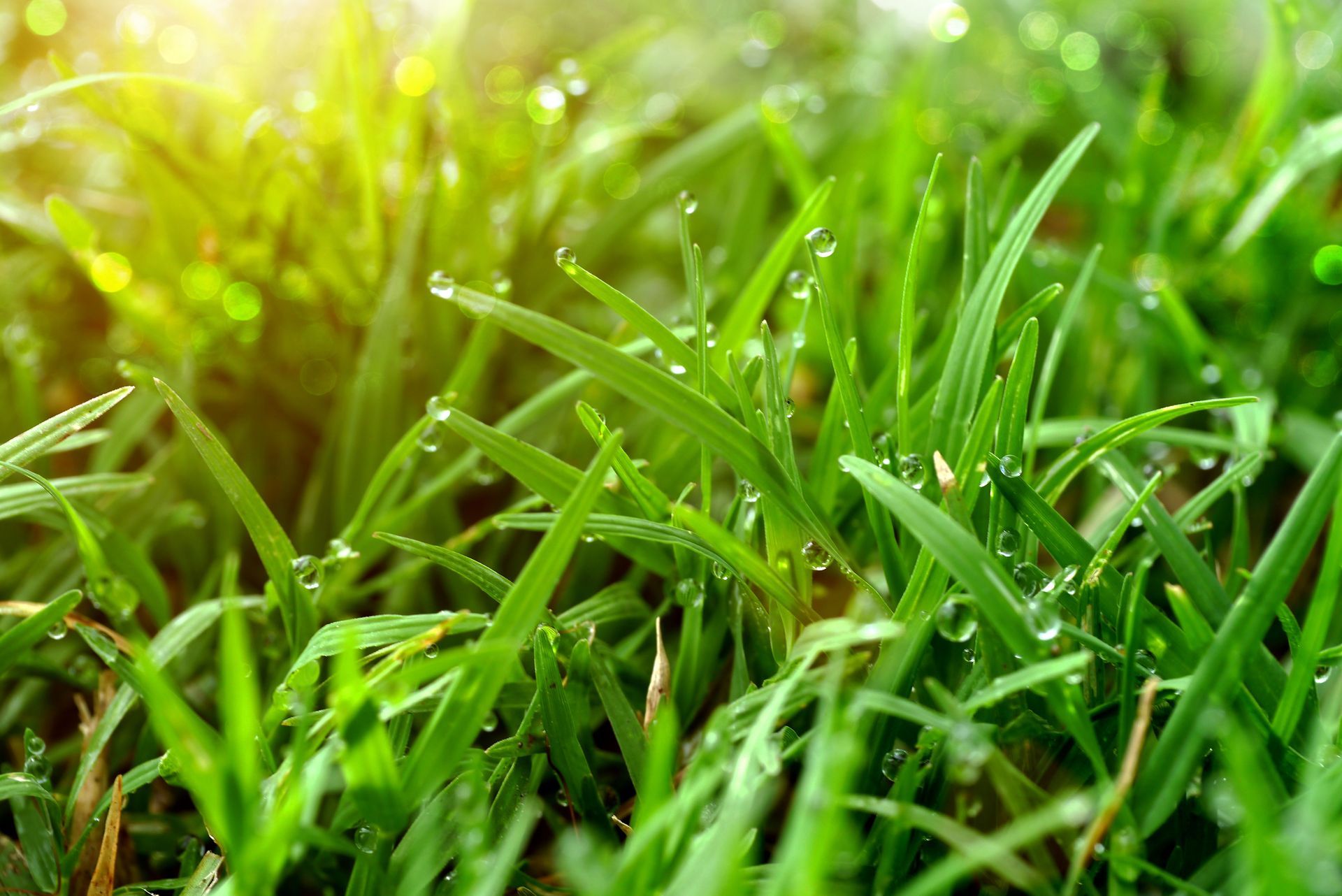How Can Lawn Fertilizers Help the pH Balance for Healthy Soil?
Maintaining a healthy lawn goes beyond regular mowing and watering—it begins with the condition of the soil itself. Soil pH plays a critical role in how effectively your grass can absorb nutrients, and an imbalance can lead to poor growth, discoloration, or invasive weed problems. One of the most effective ways to adjust and maintain soil pH is by using lawn fertilizers designed with specific nutrient balances. But how exactly do these products influence pH, and what role do they play in keeping soil healthy?
Understanding Soil pH and Why It Matters
Soil pH is a measure of how acidic or alkaline the soil is, rated on a scale from 0 to 14, according to the Natural Resources Conservation Service. A pH of 7 is considered neutral, with values below 7 indicating acidity and above 7 indicating alkalinity. Most grasses thrive in a slightly acidic to neutral range, typically between 6.0 and 7.0. When soil drifts too far outside this range, nutrients become either locked in the soil or leach away, making them unavailable to plants.
For example:
- Acidic soil (below 6.0): Essential nutrients like phosphorus, calcium, and magnesium may become unavailable. Aluminum and manganese can rise to toxic levels.
- Alkaline soil (above 7.5): Iron, manganese, and phosphorus deficiencies often appear, leading to yellowing grass and weak growth.
According to Oregon State University, the ideal soil pH for vegetables is between 6.2 and 6.8. While lawns are not identical to vegetable gardens, this range emphasizes the importance of balanced soil pH in ensuring nutrient availability.
Without proper balance, even the most expensive lawn fertilizers may fail to deliver results, since the nutrients they contain cannot be absorbed effectively.
How They Influence Soil pH
Lawn fertilizers do more than just feed your grass—they can also shift the soil’s acidity or alkalinity. Different fertilizer types have varying effects on pH, which is why it’s important to choose products that align with your soil’s needs.
1. Acidifying Fertilizers
Some fertilizers naturally lower soil pH, making it more acidic. Products that contain ammonium sulfate, ammonium nitrate, or urea are common acidifying agents. These fertilizers release hydrogen ions as they break down, which increases soil acidity.
When to use them:
- For lawns planted in alkaline soil (above 7.5) where grass struggles to absorb nutrients.
- To address iron chlorosis, a condition where grass blades turn yellow due to iron deficiency often caused by high pH.
2. Alkalizing Fertilizers
Other fertilizers can raise soil pH and reduce acidity. Fertilizers containing lime (calcium carbonate) or wood ash have alkalizing effects. They help neutralize excess acidity and create conditions where nutrients like phosphorus become more available.
When to use them:
- For lawns in highly acidic regions where heavy rainfall leaches away calcium and magnesium.
- To promote balanced growth and reduce the risk of aluminum toxicity in the soil.
3. Balanced Fertilizers
Some fertilizers are formulated to minimize drastic pH changes while still providing essential nutrients. These are ideal for maintaining an already balanced soil environment. They work best when paired with routine soil testing to confirm that pH levels remain stable.
The Role of Lawn Fertilizers in Nutrient Availability
Soil pH and nutrient uptake are closely connected. Fertilizers supply nutrients, but soil pH determines whether grass roots can actually absorb them.
- Nitrogen: Most forms are absorbed best between pH 6.0 and 7.5.
- Phosphorus: Becomes unavailable in acidic soils below 6.0 or alkaline soils above 7.5.
- Potassium: Generally available across a wider pH range but still diminished in extremely acidic conditions.
By adjusting soil pH through the right fertilizers, you create conditions that maximize nutrient availability. This not only helps grass grow stronger but also reduces the need for frequent applications, saving time and money in the long run.
Benefits of Maintaining Proper Soil pH with Lawn Fertilizers
Correcting soil pH with fertilizers provides several key advantages beyond greener grass:
- Improved root development: Balanced pH promotes stronger, deeper roots that resist drought and stress.
- Enhanced disease resistance: Grass in well-balanced soil is less prone to fungal diseases that thrive in weakened plants.
- Weed reduction: Healthy lawns crowd out weeds naturally, reducing reliance on herbicides.
- Efficient fertilizer use: Nutrients in fertilizers are more effective, minimizing waste and runoff into nearby waterways.
Steps to Use Lawn Fertilizers for pH Balance
1. Test Your Soil First
Before applying any fertilizer, start with a soil test. This provides an accurate reading of your soil’s current pH and highlights nutrient deficiencies. Many local extension services or garden centers offer testing kits or lab services.
2. Choose the Right Fertilizer
Match the type of fertilizer to your soil’s needs:
- Acidic soil: Use fertilizers with lime or calcium carbonate.
- Alkaline soil: Use fertilizers with ammonium sulfate or sulfur-based compounds.
- Neutral soil: Use balanced fertilizers to maintain conditions.
3. Apply Fertilizer Properly
Follow application instructions carefully to avoid over-fertilizing, which can cause nutrient runoff, lawn burn, or further pH imbalances. Spread fertilizer evenly and water afterward to help nutrients penetrate the soil.
4. Re-test and Adjust
Soil pH is not a one-time concern—it can shift due to rainfall, irrigation, or repeated fertilizer use. Re-test every one to two years and adjust with targeted fertilizers as needed.
Common Mistakes to Avoid
While fertilizers are powerful tools, improper use can do more harm than good. Here are a few common mistakes to avoid:
- Skipping soil tests: Applying fertilizers without knowing your soil’s pH may worsen existing imbalances.
- Over-application: Too much fertilizer can burn grass, increase acidity, or pollute groundwater.
- Ignoring long-term effects: Some fertilizers change pH slowly, so patience and monitoring are key.
- Using the wrong type: Acidic fertilizers on already acidic soil, for example, may push the pH too low and stunt growth.
Eco-Friendly Considerations
Modern lawn care also emphasizes sustainability. Choosing fertilizers formulated for eco-friendly use can help protect local ecosystems while maintaining soil health. Look for:
- Slow-release fertilizers: Reduce runoff and provide nutrients over time.
- Organic fertilizers: Derived from natural materials like compost or bone meal, they improve soil structure and gradually balance pH.
- Phosphorus-free options: In areas with phosphorus-rich soils, these reduce the risk of water pollution.
By selecting fertilizers that improve soil health responsibly, you can balance pH while protecting your environment.
The Long-Term Value of Balanced Soil
Adjusting soil pH with fertilizers isn't just about short-term greenness. It’s an investment in the long-term vitality of your lawn. Balanced soil creates a foundation where grass can flourish with fewer inputs, lower maintenance costs, and greater resilience against challenges like drought, pests, or heavy foot traffic.
For homeowners, this means less frustration and more enjoyment of their outdoor spaces. For property managers or landscapers, it translates into healthier landscapes that require fewer corrective measures.
Soil pH is one of the most overlooked yet critical factors in lawn health. The right balance determines how effectively nutrients are absorbed and how resilient your grass will be against stress and competition. Lawn fertilizers play a key role in managing this balance, whether by acidifying, alkalizing, or maintaining neutral soil conditions.
By testing your soil, choosing the right lawn fertilizers, and monitoring changes over time, you can create a healthy foundation for lush, green grass. Balanced soil not only enhances the look of your lawn but also strengthens its ability to grow, resist stress, and provide lasting beauty. Reach out to Perfect Touch Landscape & Irrigation today to learn more and handle all your fertilization needs.



Share On: